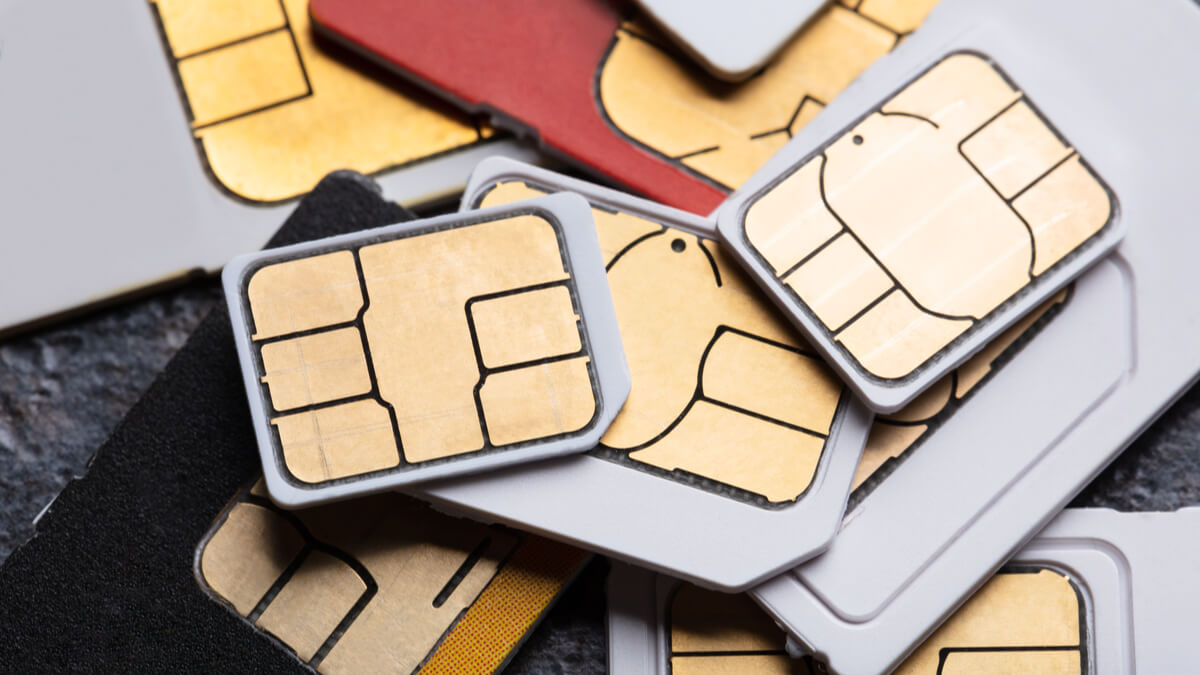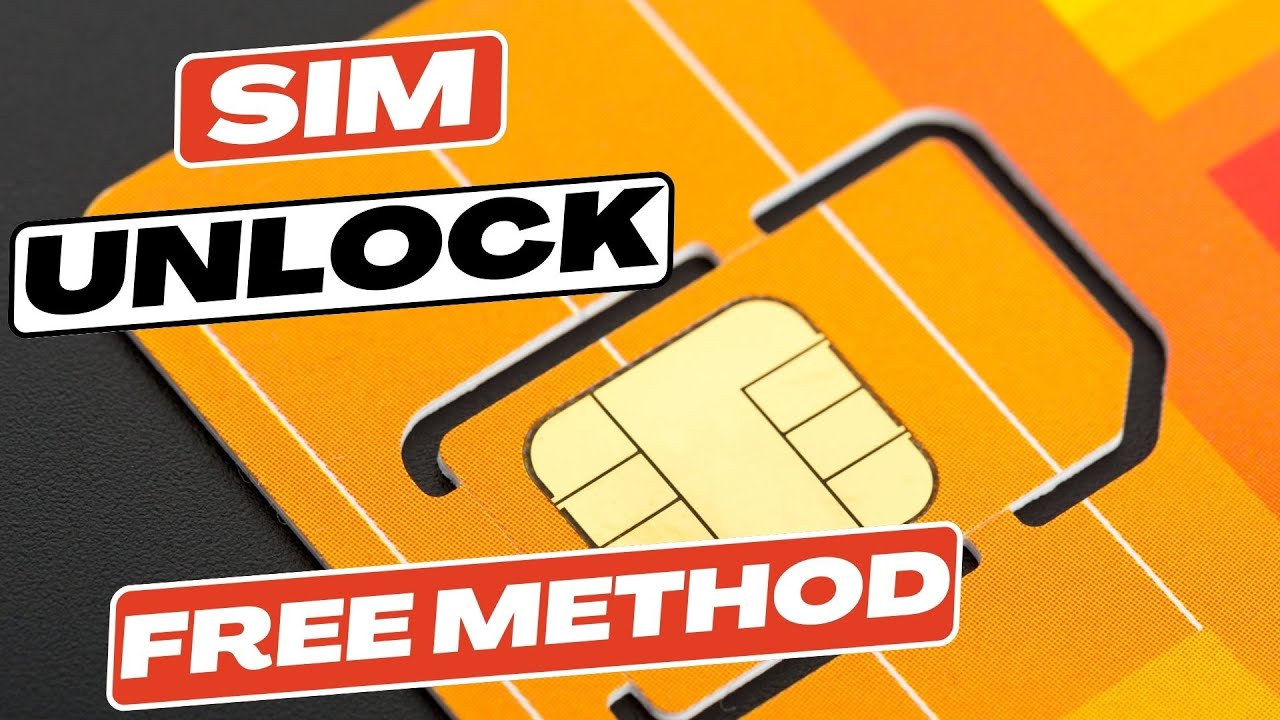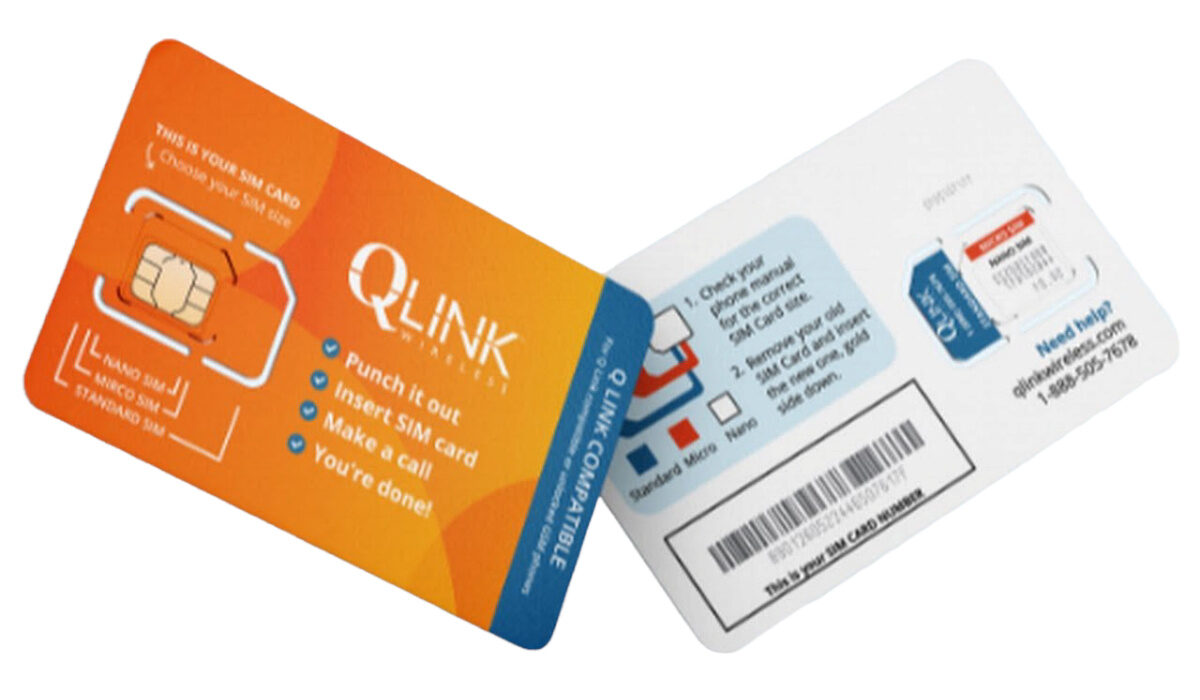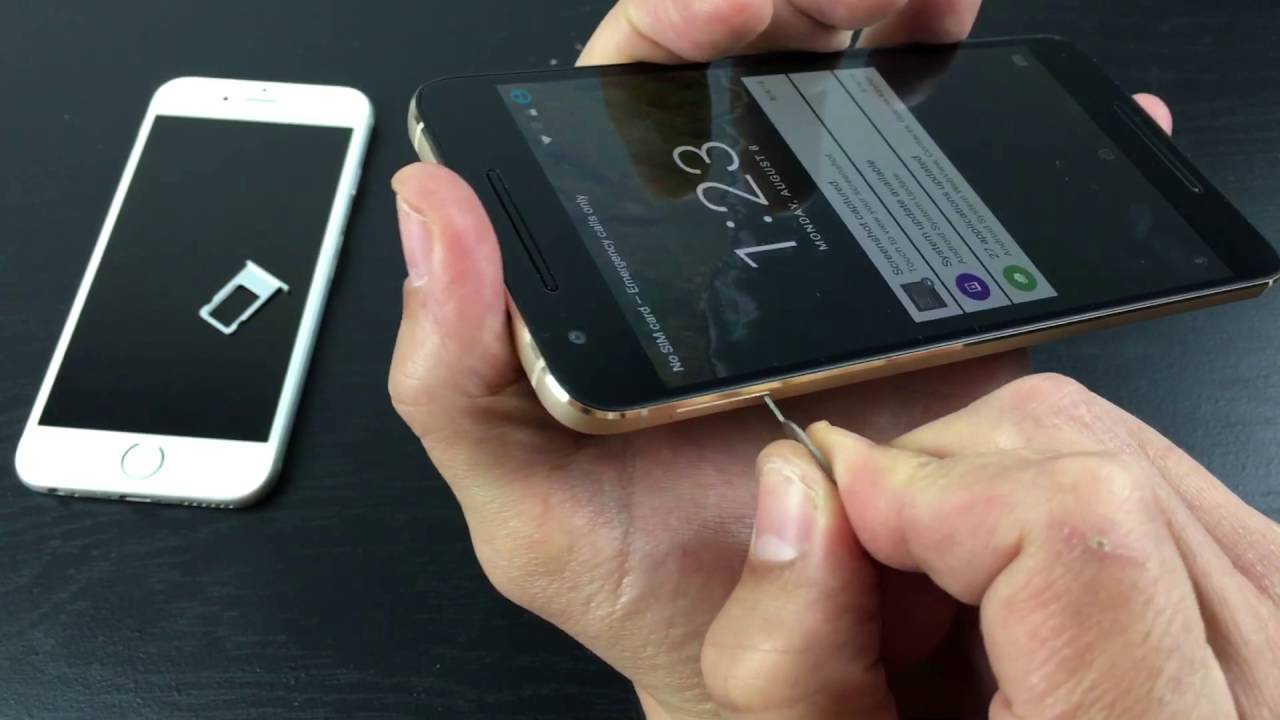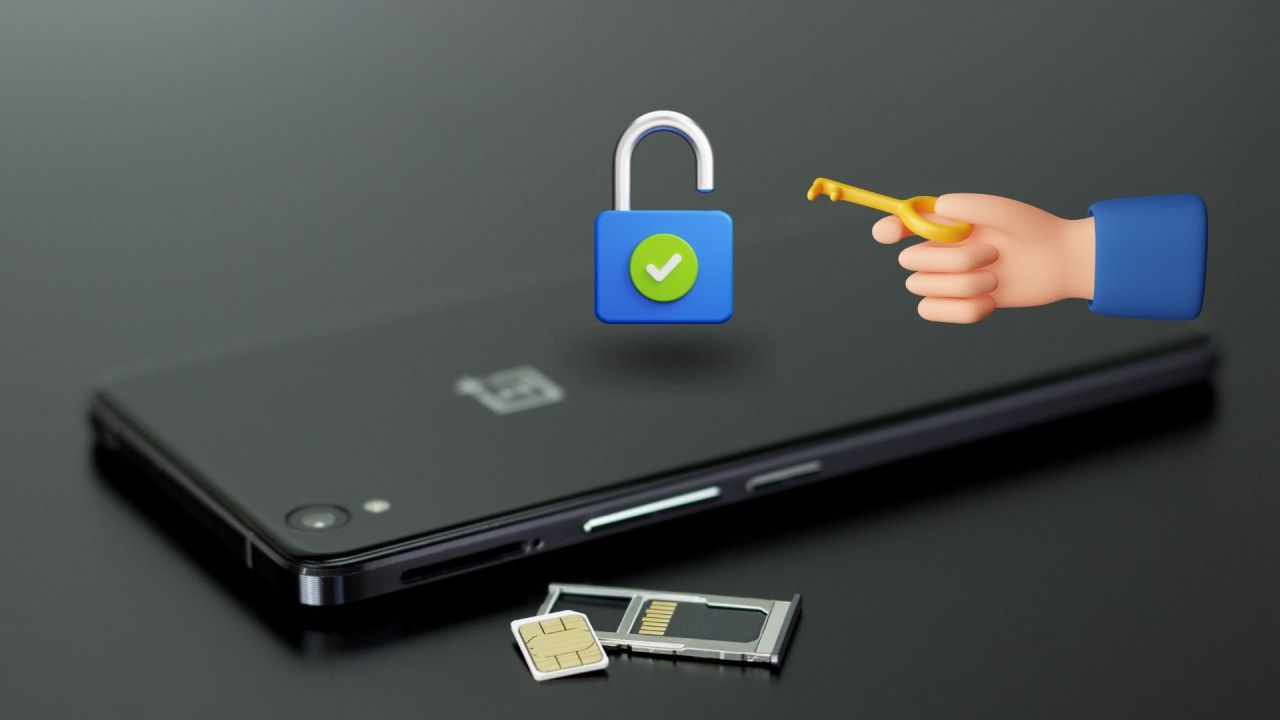Introduction
Australia is a land of diverse landscapes, vibrant cities, and a rich tapestry of cultures. Whether you're planning a leisurely vacation, embarking on a business trip, or settling in the Land Down Under, staying connected is essential in today's digital age. One of the first things you'll need to consider upon arrival is obtaining a SIM card to ensure seamless communication during your stay.
Navigating the telecommunications landscape in a new country can be daunting, but fear not! This comprehensive guide will walk you through everything you need to know about obtaining a SIM card in Australia. From understanding the types of SIM cards available to choosing the right plan for your needs, this guide will equip you with the knowledge to make informed decisions and stay connected while exploring the beauty of Australia.
So, whether you're eager to share your adventures with loved ones back home, stay in touch with local contacts, or simply access the internet on the go, obtaining a SIM card is an essential step for anyone visiting or residing in Australia. Let's delve into the intricacies of the Australian telecommunications market and unravel the options available for obtaining a SIM card that suits your communication needs.
Understanding the Australian Telecommunications Market
Australia boasts a robust and competitive telecommunications market, offering a wide array of options for staying connected. The country is home to several major network operators, including Telstra, Optus, and Vodafone, each vying to provide reliable coverage and innovative services to consumers.
Telstra, often recognized as the leading telecommunications provider in Australia, offers extensive coverage across the vast expanse of the country. With a reputation for reliability and speed, Telstra's network is a popular choice for those seeking consistent connectivity, especially in regional and remote areas.
Optus, another prominent player in the Australian telecommunications landscape, competes vigorously with Telstra, offering competitive plans and a strong network footprint. In urban areas, Optus provides high-speed data services and a range of mobile plans tailored to diverse consumer needs.
Vodafone, while not as dominant as Telstra and Optus, remains a significant contender in the telecommunications market. With a focus on value-driven plans and customer-centric offerings, Vodafone appeals to cost-conscious consumers seeking affordable yet reliable mobile services.
In addition to these major players, Australia hosts several Mobile Virtual Network Operators (MVNOs) that operate on the infrastructure of the primary network providers. These MVNOs offer a variety of plans catering to specific demographics, such as international students, budget-conscious travelers, and data-hungry users, further enriching the telecommunications landscape in Australia.
It's important to note that Australia's telecommunications market is characterized by a strong focus on 4G and 5G networks, enabling fast and reliable mobile data services across the country. As the demand for data-intensive applications and seamless connectivity continues to rise, network operators are continually investing in infrastructure to meet the evolving needs of consumers.
Understanding the dynamics of the Australian telecommunications market is crucial when obtaining a SIM card. By familiarizing yourself with the major network providers, their coverage areas, and the types of services they offer, you can make informed decisions to ensure that your communication needs are met seamlessly throughout your stay in Australia.
Types of SIM Cards Available in Australia
When it comes to obtaining a SIM card in Australia, you'll encounter a diverse range of options tailored to different communication needs and preferences. Understanding the types of SIM cards available is essential for making an informed choice that aligns with your usage patterns and budget. Here's a detailed look at the various types of SIM cards you can expect to find in the Australian market:
-
Prepaid SIM Cards: Prepaid SIM cards are a popular choice for travelers and temporary residents. With a prepaid SIM card, you have the flexibility to control your spending by purchasing recharge vouchers or topping up online. These SIM cards typically come with a pre-loaded amount of credit, allowing you to make calls, send texts, and access data until the credit is exhausted. Prepaid SIM cards are ideal for those seeking cost-effective and straightforward mobile services without long-term commitments.
-
Postpaid SIM Cards: Postpaid SIM cards, also known as mobile phone plans, offer the convenience of using mobile services and paying for them at the end of a billing cycle. These plans often include a monthly allowance of calls, texts, and data, providing a predictable billing structure for regular users. Postpaid plans may also offer additional features such as international roaming, entertainment subscriptions, and device installment options, making them suitable for long-term residents and individuals seeking comprehensive mobile offerings.
-
Data-Only SIM Cards: For users primarily interested in accessing mobile data for internet browsing, streaming, or tethering, data-only SIM cards are an attractive option. These SIM cards are designed to provide high-speed data connectivity without the inclusion of traditional voice call and text messaging services. Data-only SIM cards are ideal for tablets, mobile hotspots, and devices used primarily for internet-based activities.
-
International SIM Cards: Catering to the needs of travelers, international SIM cards offer the convenience of using a single SIM card across multiple countries, often with competitive rates for international calls and data usage. These SIM cards are designed to mitigate roaming charges and provide seamless connectivity while traveling abroad, making them a valuable asset for globetrotters and frequent international travelers.
-
eSIM: An emerging technology in the telecommunications space, eSIM (embedded SIM) offers the flexibility of activating mobile services without a physical SIM card. Compatible with eSIM-enabled devices, this digital SIM technology allows users to switch between different mobile plans and operators without the need to physically swap SIM cards. eSIMs are gaining traction in Australia, offering convenience and versatility for users with eSIM-compatible devices.
Understanding the nuances of each SIM card type empowers you to select the most suitable option based on your communication requirements, duration of stay, and device compatibility. Whether you prioritize flexibility, cost-effectiveness, or comprehensive mobile services, the Australian market offers a diverse array of SIM card options to cater to a broad spectrum of user preferences.
Where to Obtain a SIM Card in Australia
Obtaining a SIM card in Australia is a hassle-free process, thanks to the widespread availability of mobile network providers' products and services. Whether you're touching down at major airports, exploring bustling city centers, or venturing into local convenience stores, you'll find numerous avenues to acquire a SIM card and kickstart your communication journey.
-
Airports: Upon arrival at major international airports such as Sydney Airport, Melbourne Airport, or Brisbane Airport, travelers can conveniently purchase SIM cards from dedicated kiosks or retail outlets located within the terminals. This option is particularly advantageous for those seeking immediate connectivity upon landing in Australia, ensuring that you can stay connected from the moment you step off the plane.
-
Retail Stores: Australia is home to a plethora of retail outlets and electronic stores, including major chains such as Telstra, Optus, Vodafone, and their respective authorized resellers. These stores are strategically positioned in prominent shopping districts and commercial hubs across cities and towns, offering a one-stop destination for purchasing SIM cards, exploring mobile plans, and seeking expert advice from knowledgeable staff.
-
Supermarkets and Convenience Stores: For added convenience, many supermarkets and convenience stores throughout Australia stock prepaid SIM cards, making it convenient to grab a SIM card while running everyday errands. This accessibility ensures that even during your routine grocery shopping or leisurely strolls, you can easily acquire a SIM card to stay connected without disrupting your daily activities.
-
Online Platforms: In the digital age, online channels play a pivotal role in facilitating SIM card purchases. Major network operators and MVNOs offer the option to order SIM cards through their official websites, allowing you to have a SIM card delivered to your preferred address or collect it from designated pickup points. This online accessibility provides flexibility for those who prefer the convenience of digital transactions and doorstep delivery.
-
Mobile Retailers and Pop-Up Stalls: Throughout popular tourist destinations and event venues, mobile retailers and pop-up stalls often showcase an array of SIM card options, catering to the needs of travelers and visitors. These temporary setups offer a convenient solution for acquiring a SIM card while exploring tourist attractions, attending events, or engaging in outdoor activities.
With these diverse avenues for obtaining a SIM card in Australia, you can seamlessly integrate connectivity into your travel or daily routine. Whether you prioritize immediate access upon arrival, seek expert guidance from retail staff, or prefer the convenience of online transactions, the Australian telecommunications landscape is designed to accommodate your preferences and ensure that you can stay connected effortlessly throughout your stay in the Land Down Under.
Choosing the Right Plan for Your Needs
Selecting the right mobile plan in Australia is a pivotal decision that hinges on your communication requirements, budget considerations, and usage patterns. With an array of plans offered by major network operators and MVNOs, understanding the key factors to consider can help you make an informed choice that aligns with your specific needs.
Consider Your Usage Patterns
Begin by evaluating your typical mobile usage, including the frequency of calls, volume of text messages, and data consumption. If you rely heavily on data for streaming, browsing, or using location-based services, prioritize plans with generous data allowances. Conversely, if your communication revolves around voice calls and occasional texting, a plan with a focus on call inclusions might better suit your needs.
Coverage and Network Quality
Assess the coverage and network quality of the providers in your intended area of stay. While major cities often enjoy comprehensive coverage from all network operators, regional and remote areas may exhibit variations in network performance. If you anticipate traveling to rural or outback locations, prioritize providers renowned for their extensive regional coverage to ensure uninterrupted connectivity.
International Roaming and Inclusions
For frequent travelers or those with international communication needs, exploring plans with international roaming inclusions and competitive rates for overseas calls and data usage is essential. Some providers offer bundled international roaming options, allowing you to use your mobile services seamlessly while traveling abroad without incurring exorbitant roaming charges.
Flexibility and Contract Terms
Consider your preference for plan flexibility and contract terms. Prepaid plans offer the freedom to recharge as needed without long-term commitments, making them suitable for short-term visitors and travelers. On the other hand, postpaid plans often feature additional benefits such as device installment options, entertainment subscriptions, and family sharing plans, catering to the needs of long-term residents and regular users.
Data Speed and Add-Ons
If high-speed data connectivity is a priority, delve into the data speed offerings of different plans, especially those leveraging 4G and 5G networks. Additionally, explore the availability of data add-ons and top-up options, which can be beneficial for managing unexpected spikes in data usage without incurring excess charges.
Budget Considerations
Lastly, align your choice with your budget considerations. Evaluate the monthly costs, upfront fees, and any additional charges associated with the plan to ensure that it remains within your financial parameters while delivering the desired mobile services.
By carefully considering these factors, you can navigate the diverse range of mobile plans in Australia and pinpoint the one that best suits your communication needs, ensuring that you stay connected seamlessly throughout your stay in the Land Down Under.
Activating Your SIM Card
Activating your SIM card is a pivotal step that sets the stage for seamless connectivity and mobile services during your stay in Australia. Whether you've opted for a prepaid SIM card or a postpaid plan, the activation process is designed to ensure that your SIM card is ready for use, enabling you to make calls, send texts, and access high-speed data without delay. Here's a comprehensive guide to activating your SIM card in Australia:
Prepaid SIM Cards
For travelers and temporary residents who have chosen a prepaid SIM card, the activation process is straightforward and can typically be completed in a few simple steps. Upon acquiring your prepaid SIM card, you'll find it pre-loaded with a certain amount of credit, ready for immediate use. To activate the SIM card, you may need to follow the activation instructions provided by the network operator, which often involve inserting the SIM card into your device and following the prompts to complete the activation process. Some operators also offer the option to activate the SIM card online or through their official mobile app, providing added convenience for users.
Postpaid SIM Cards
If you've opted for a postpaid plan, the activation process may involve additional steps to set up your account and configure the billing details. Upon receiving your postpaid SIM card, you'll typically need to activate it by following the instructions provided by the network operator. This may involve inserting the SIM card into your device and initiating the activation process, after which you may need to register your account details, set up payment preferences, and verify your identity as part of the activation procedure. Some network operators also offer the flexibility of activating postpaid SIM cards through their online portals or dedicated customer service hotlines, streamlining the activation process for users.
eSIM Activation
For users with eSIM-compatible devices, the activation process differs slightly from traditional SIM cards. eSIM activation typically involves scanning a QR code or downloading a mobile operator's eSIM profile to your device, enabling the digital SIM technology to be provisioned seamlessly. This streamlined activation process eliminates the need for a physical SIM card and allows users to activate mobile services directly onto their eSIM-enabled devices, offering flexibility and convenience.
Completing the Activation
Upon completing the activation process, your SIM card will be ready for use, granting you access to a plethora of mobile services, including calls, texts, and high-speed data. It's important to ensure that your device is compatible with the SIM card and that it's configured to access the network settings provided by the operator. Once activated, you can enjoy the convenience of staying connected, navigating new destinations, and capturing memorable moments without worrying about connectivity issues.
By following the activation instructions provided by the network operator and ensuring that your device is compatible with the SIM card, you can activate your SIM card seamlessly, setting the stage for a connected and immersive experience during your time in Australia.
Tips for Using Your SIM Card in Australia
-
Network Coverage Awareness: Familiarize yourself with the network coverage areas of your chosen provider. While major cities boast comprehensive coverage, rural and remote areas may have varying signal strengths. Understanding coverage maps and network performance can help you anticipate connectivity scenarios during your travels across diverse landscapes.
-
Data Monitoring and Management: Keep an eye on your data usage to avoid unexpected charges. Many mobile plans offer tools to monitor data consumption, and setting data usage alerts can help you stay within your data allowance. Additionally, consider utilizing Wi-Fi hotspots when available to conserve your mobile data for essential tasks.
-
International Dialing Codes: If you anticipate making international calls, familiarize yourself with international dialing codes. Knowing the correct country and area codes can ensure seamless international communication without errors. Some mobile plans also offer international calling add-ons, providing cost-effective options for staying in touch with contacts abroad.
-
SIM Card Compatibility: Ensure that your device is compatible with the SIM card you've obtained. Different devices may require specific SIM card sizes (standard, micro, nano), and using the correct SIM card adapter can facilitate smooth insertion and removal of the SIM card without causing any damage to your device.
-
Roaming Considerations: If you plan to travel beyond Australia's borders, explore the roaming options available with your mobile plan. Some providers offer international roaming packs or temporary roaming add-ons, allowing you to use your Australian SIM card in select overseas destinations without incurring exorbitant roaming charges.
-
SIM Card Security: Safeguard your SIM card and associated PIN to prevent unauthorized usage. In the event of loss or theft, promptly contact your network provider to have the SIM card deactivated and replaced. By maintaining the security of your SIM card, you can mitigate the risk of unauthorized access to your mobile services and personal information.
-
Customer Support Accessibility: Familiarize yourself with the customer support channels provided by your network operator. Whether it's through dedicated hotlines, online chat support, or self-service portals, having access to reliable customer support can assist you in resolving any queries or technical issues related to your SIM card and mobile services.
-
SIM Card Recharge Options: For prepaid SIM card users, explore the various recharge options available, including online top-ups, voucher purchases, and automatic recharge settings. Understanding the recharge mechanisms ensures that you can maintain uninterrupted mobile services by replenishing your credit as needed.
By incorporating these tips into your mobile usage practices, you can maximize the benefits of your SIM card, stay informed about your communication options, and navigate the intricacies of mobile connectivity with confidence during your time in Australia.
Conclusion
Obtaining a SIM card in Australia is a pivotal step in ensuring seamless connectivity and communication during your time in the Land Down Under. As you embark on your journey, whether for travel, work, or leisure, the diverse array of SIM card options and mobile plans available in Australia presents a wealth of choices to cater to your specific communication needs.
By understanding the nuances of the Australian telecommunications market and familiarizing yourself with the types of SIM cards available, you can make informed decisions that align with your usage patterns, budget considerations, and duration of stay. Whether you opt for a prepaid SIM card offering flexibility and cost control, a postpaid plan with comprehensive mobile services, or an eSIM for digital convenience, the Australian market is designed to accommodate a broad spectrum of user preferences.
Furthermore, the accessibility of SIM cards at airports, retail outlets, online platforms, and convenience stores ensures that acquiring a SIM card is a hassle-free endeavor, seamlessly integrating connectivity into your travel or daily routine. With major network operators and MVNOs vying to provide reliable coverage and innovative services, you can navigate the telecommunications landscape with confidence, knowing that your communication needs will be met throughout your stay in Australia.
Choosing the right mobile plan involves careful consideration of usage patterns, coverage areas, international roaming options, and budget constraints. By evaluating these factors, you can pinpoint a plan that delivers the desired mobile services while aligning with your communication preferences, ensuring that you stay connected effortlessly in both urban centers and remote landscapes.
Once you've obtained and activated your SIM card, incorporating best practices such as network coverage awareness, data monitoring, and international dialing code familiarity can further enhance your mobile experience, enabling you to navigate new destinations, stay in touch with loved ones, and capture memorable moments without connectivity concerns.
As you immerse yourself in the beauty of Australia, from its iconic landmarks to its hidden gems, your SIM card will serve as a gateway to seamless communication, empowering you to share your experiences, stay informed, and access essential services with ease. By leveraging the tips and insights provided in this guide, you can make the most of your SIM card, ensuring that you remain connected and engaged throughout your unforgettable journey in the Land Down Under.







